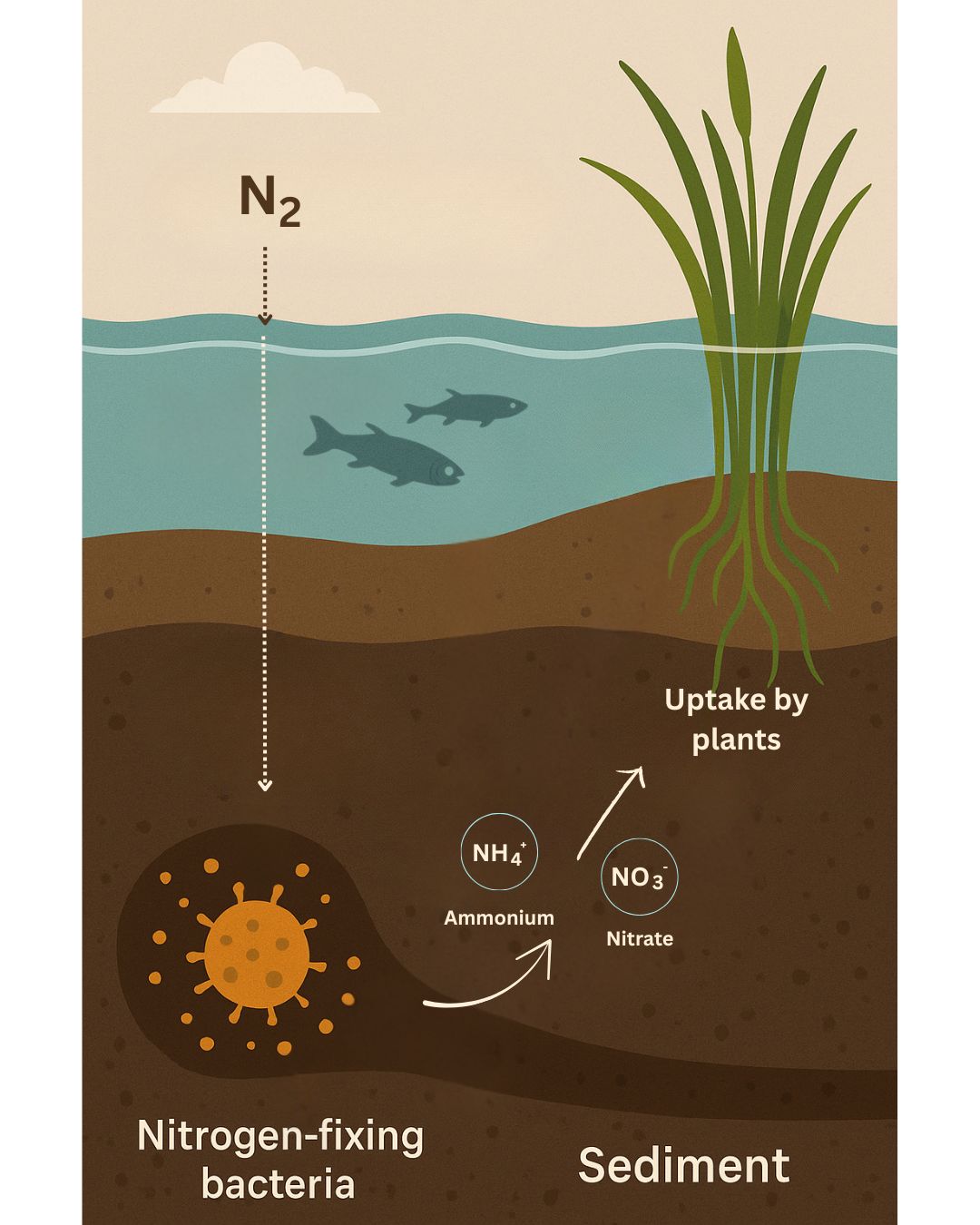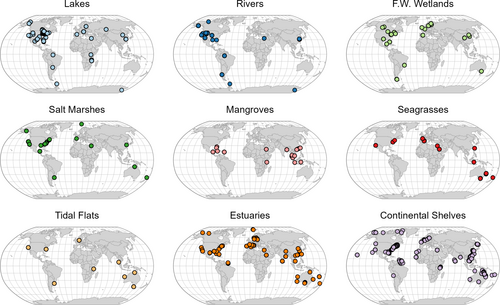When we think about life on Earth, we might picture scenes from a BBC Planet Earth special—vast rainforests, grasslands, or blue oceans. Yet a new study reveals how the “in-between” spaces—lakes, rivers, wetlands, estuaries, and continental shelves—are quietly transforming nitrogen at a global scale, with big implications for the functioning of our planet.
Nitrogen is the most abundant gas in our atmosphere; yet, in this form, it’s locked away, unusable by most life. “Nitrogen-fixing” microbes transform it into ammonia, which is then used in the essential building blocks for proteins, DNA, and the fabric of ecosystems. Without this, plankton, seagrasses, marsh plants, and soil microbes can’t grow—or capture and store carbon, a critical service at a time when excess carbon in the atmosphere is affecting global conditions.
Because nitrogen is so essential to life and closely tied to carbon storage, scientists have spent decades trying to understand how it moves through Earth’s systems.
A new study published in Science and supported by Rhode Island Sea Grant finds that these inland and coastal waters, despite covering less than 10% of Earth’s surface, are responsible for fixing roughly 15% of the nitrogen entering ecosystems worldwide—about 40 teragrams, or 88 billion pounds, each year. That’s comparable to a third of what’s fixed on land or in the open ocean.

Nitrogen from the atmosphere is “fixed” by microbes in water and sediments—converted into forms that aquatic plants and algae can use to grow, fueling productivity across ecosystems.
“These environments have a disproportionate impact on the global nitrogen budget, contributing more nitrogen through fixation than their areal coverage would suggest,” the authors write.

By compiling more than 4,500 measurements of nitrogen fixation rates from studies worldwide, the team discovered that nitrogen fixation occurs in nearly all types of inland and coastal habitats—from muddy river bottoms to tropical mangrove soils—and often at rates matching or exceeding those found in terrestrial and marine systems.
One of the most surprising findings of the study was that most nitrogen fixation occurs in sediments—in the mud, sand, and soils beneath the water. The highest rates were found in tidal flats and freshwater wetlands. Even in places where nitrogen is already abundant, the microbes living on and in these bottom layers continue fixing more—possibly to balance their own chemistry or to support other processes that keep the ecosystem functioning.
The study notes that while most data comes from temperate zones in the Northern Hemisphere, the limited measurements from polar and tropical regions show substantial activity there. The water columns of polar lakes, for example, exhibit nitrogen fixation rates seven times higher than tropical lakes. And although tropical rivers and wetlands also show strong nitrogen-fixing activity, with so few measurements, it is challenging to draw global conclusions.
Because data from these regions are sparse, the study notes that overlooking them could mean missing an important part of the global nitrogen story. The study also points out that nitrogen fixation rates vary depending on how and when they’re measured. Most historical data rely on a few methods, from acetylene reduction assays and ¹⁵N₂ labeling to net N₂/Ar techniques. Each method has its own biases or assumptions that influence the understanding of the nitrogen fixation process.
“As we move nitrogen fixation research forward, there is an urgent need to intercalibrate these methods across habitats,” the authors write.
Despite their small footprint, inland and coastal waters are proving to play a much larger role than previously thought. These ecosystems transform atmospheric nitrogen into forms that fuel local productivity, support coastal fisheries, enhance carbon storage, and influence ecosystem stability.
And yet, most global nitrogen models still ignore them—leaving a crucial gap in our understanding of how nitrogen and carbon move through the planet.
“If we want to predict how environmental change and human activities will alter nitrogen and carbon flows across the planet, we need to pay much closer attention to these dynamic environments,” says Dr. Robinson Fulweiler, lead author from Boston University.
Looking ahead, the team hopes their findings will spark new research in under-studied polar and tropical regions. With better measurements and more complete data, scientists can begin to see the full picture of how these hidden engines of the nitrogen cycle shape life on Earth—and how they might respond in a rapidly shifting world.
A global dataset of nitrogen fixation rates across inland and coastal waters
– Meredith Haas, RISG Science Communication & Digital Media Lead

